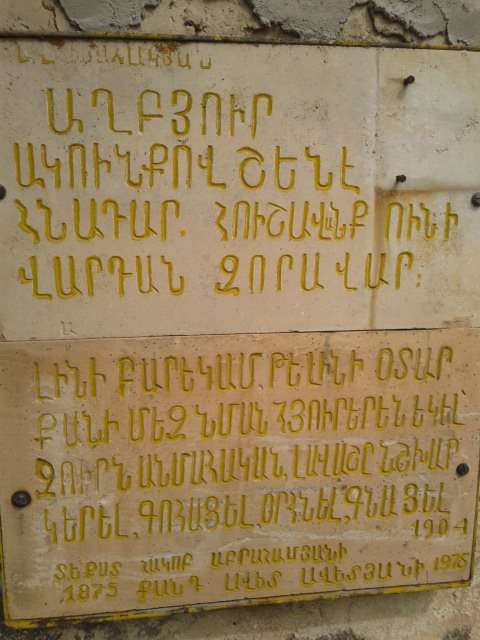Tukh Manuk
Tukh Manuk (or Tux Manuk, (Armenian Թուխ Մանուկ), "Dark-skinned Youth") refers to archaic rural shrines in Armenian. Their origin is regarded to be pre-Christian or pagan,[1] but are now a part of folk tradition within the Armenian Church.[2][3] Many are ruins or crude shacks, but many are well preserved. Some of them are thought to go back to 5-th CE, even BCE era.[4]

Quite popular throughout Armenia, such shrines are often on hilltops, sources of springs or just outside of villages. They have been linked to a proto-Indo-European deity cognate with Krishna or Shiva, a mischievous beautiful young man inhabiting the boundary between settlement and wilderness. The Tukh Manuk worshop is traditionally popular with women. They are also visited by the Yazidis.[5][6] Pilgrims gather to make offerings or sacrifices for the curing of illnesses and burn candles.[7]
Tukh Manuk is the main character in numerous medieval and modern folk poems and is mentioned in the Armenian national epic Daredevils of Sassoun. Its stories are based on oral traditions of the 8th to the 10th century and act by a Christian King David in the city Sasun fighting heroically against the Arab invaders.
See also
References
- ↑ " Tukh Manuk' hushartsanneri masin." (About the "Swarthy Youth" Monuments), Russian summary, Armenian Folklore Bibliography, ANNE M. AVAKIAN, UNIVERSITY OF CALIFORNIA PRESS, 1994, p137
- ↑ Հայաստանի առեղծվածները - Թուխ մանուկի առեղծվածը, (Mysteries Of Armenia), Public TV of Armenia, Oct 21, 2015
- ↑ Tukh-Manuk Chapel Consecration in Shahumian Village, Armenian Church, Jul 24, 2012
- ↑ ARAGATSOTN – THE LAND OF CONTRASTS p.30
- ↑ Tukh_Manuk, Armeniapedia
- ↑ [Rediscovering Armenia: an archaeological/touristic gazetteer and map set for the historical monuments of Armenia, Brady Kiesling, Raffi Kojian, Tigran Mets, 2001 p.19]
- ↑ EAST OF TURKEY, NORTH OF IRAN
- Kiesling, Brady (2005), Rediscovering Armenia: Guide, Yerevan, Armenia: Matit Graphic Design Studio
External links
- Harry Terhanian: Love and lust.
- Tukh Manuk. Armeniapedia